Scallions, Green Onions, and Spring Onions: What’s the Difference?
I dunno, is this a dumb question? Dumb or not, it’s one I’ve had for a long time. And recipe writers don’t make it easy to know what’s what. One salad calls for scallions; one salad calls for green onions; and another salad calls for spring onions. Huh?
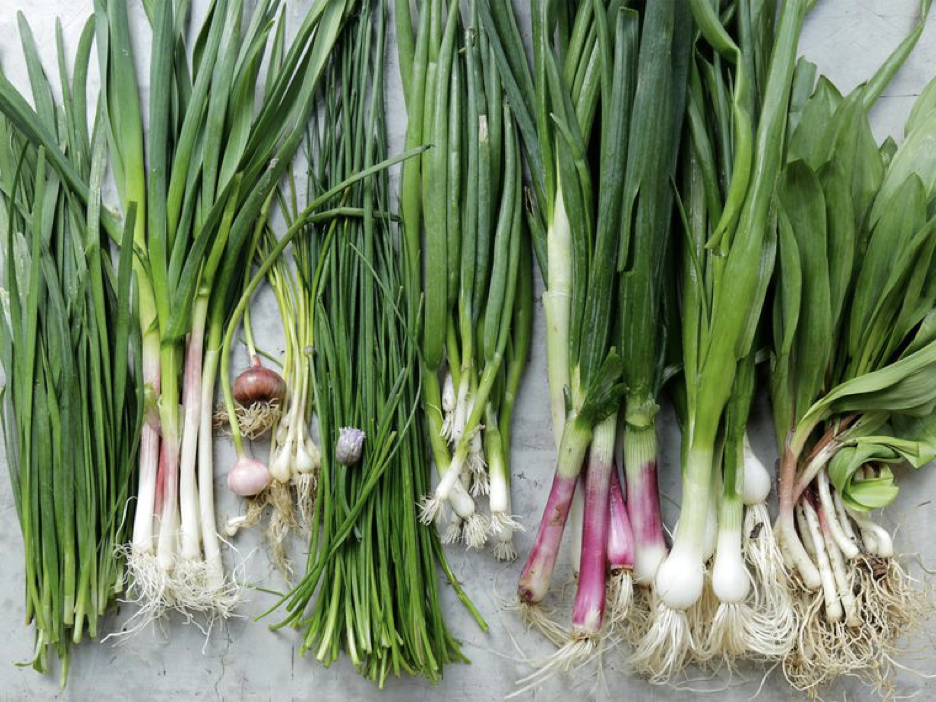
Since I tend to feel I’m fairly average, my sense is others might have this question as well.
With that in mind, I thought I’d share the answer. My information comes from several articles I read, but I’ll be concise and just share what professional chef, Christine Gallery, had to say. She’s sort of an onion expert.
To start off, she says, “Green onions and scallions are pretty much the same thing. When you want a hit of less-intense onion flavor, they’re your alliums of choice.” For simplicity’s sake, I’ll write on using just the term “scallions.”
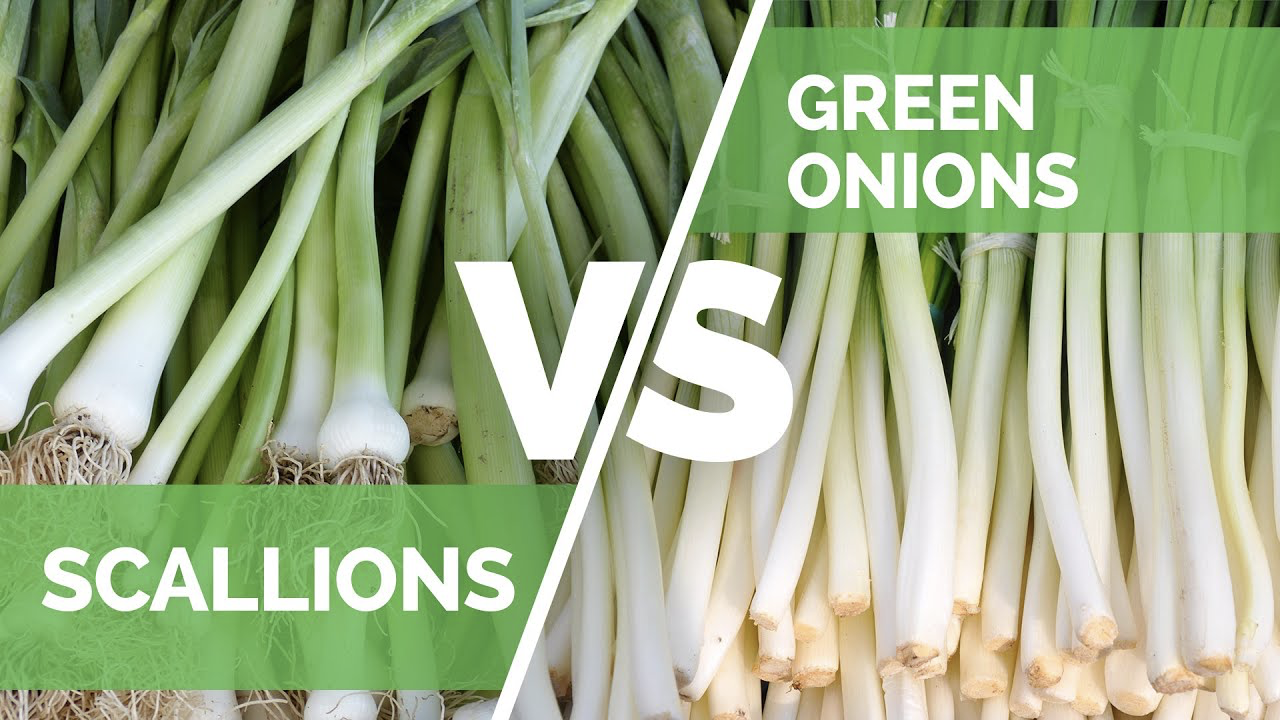
They are either harvested very young from the regular bulb-forming onions we are familiar with, or they can come from other varieties that actually never form bulbs.
Scallions are long, with a white stem end that does not bulge out. They have an onion-y but mild bite that is not as intense as regular onions (the white parts contain the most intense flavor). They can be used raw or cooked, and while some cooks discard the darker green tops, the whole thing can be eaten. (Asian cooking commonly includes the darker green tops.)
Scallions are usually available year-round. Look for a bright color, undamaged leaves, and firm stem ends.
Good to know. But how about spring onions —are they the same thing as scallions? Related, but not the same. Spring onions look similar to scallions, but you’ll notice that they have small onion bulbs at their bases.
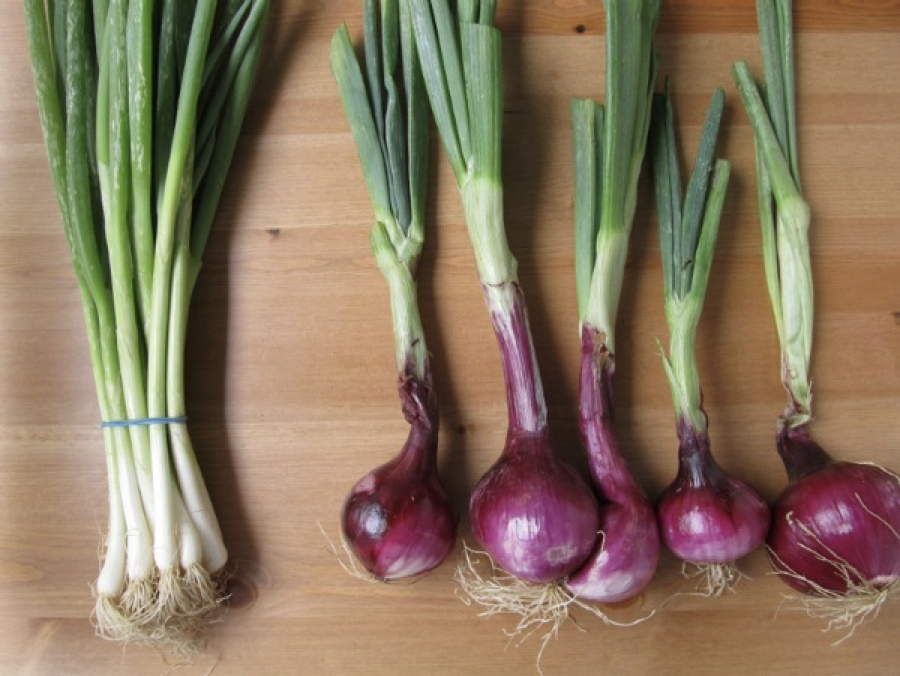
These onions come from the varietals (another word for ‘variety’ or ‘family’) that produce bulbs and are basically more mature versions of scallions. They are planted as seedlings in the late fall and then harvested the next spring, thus the word “spring” in the name.
Spring onions are sweeter and mellower than regular onions, but the greens are more intense in flavor than scallions. The bulbs can be red or white, depending on the varietal, and while they can be used in much the same way as regular bulb onions, they are great grilled, roasted whole, or used like pearl onions.
Finally, can you substitute one for the other? It boils down to taste preference. While the flavors and textures of scallions and spring onions are similar, just remember that they have a different intensity of flavors. Chef Christine doesn’t recommend using spring onions in place of scallions if the scallions are meant to be left raw (such as in a tossed salad or garnishing a soup). She says the more intense flavor could detract from the result you’re wanting to achieve.
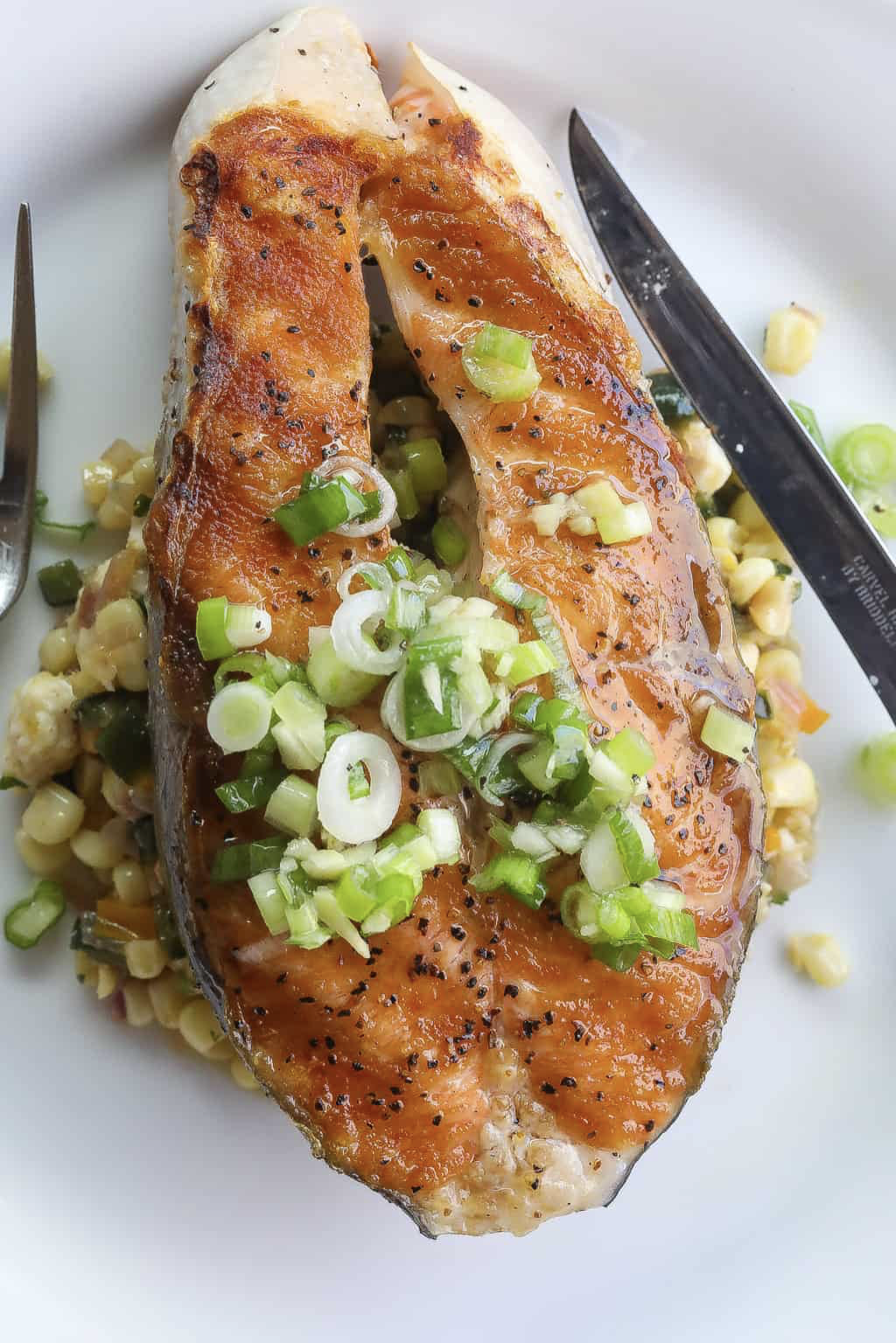
However, she says that if you’re planning on cooking the scallions or spring onions, then substitution will work. Because the cooking will mellow and even out the differences, cooking makes them fairly interchangeable.
Now, how about a recipe that uses scallions? This simply delicious recipe is courtesy of www.thekitchn.com. And read all the way to the end for enticing variations on it.
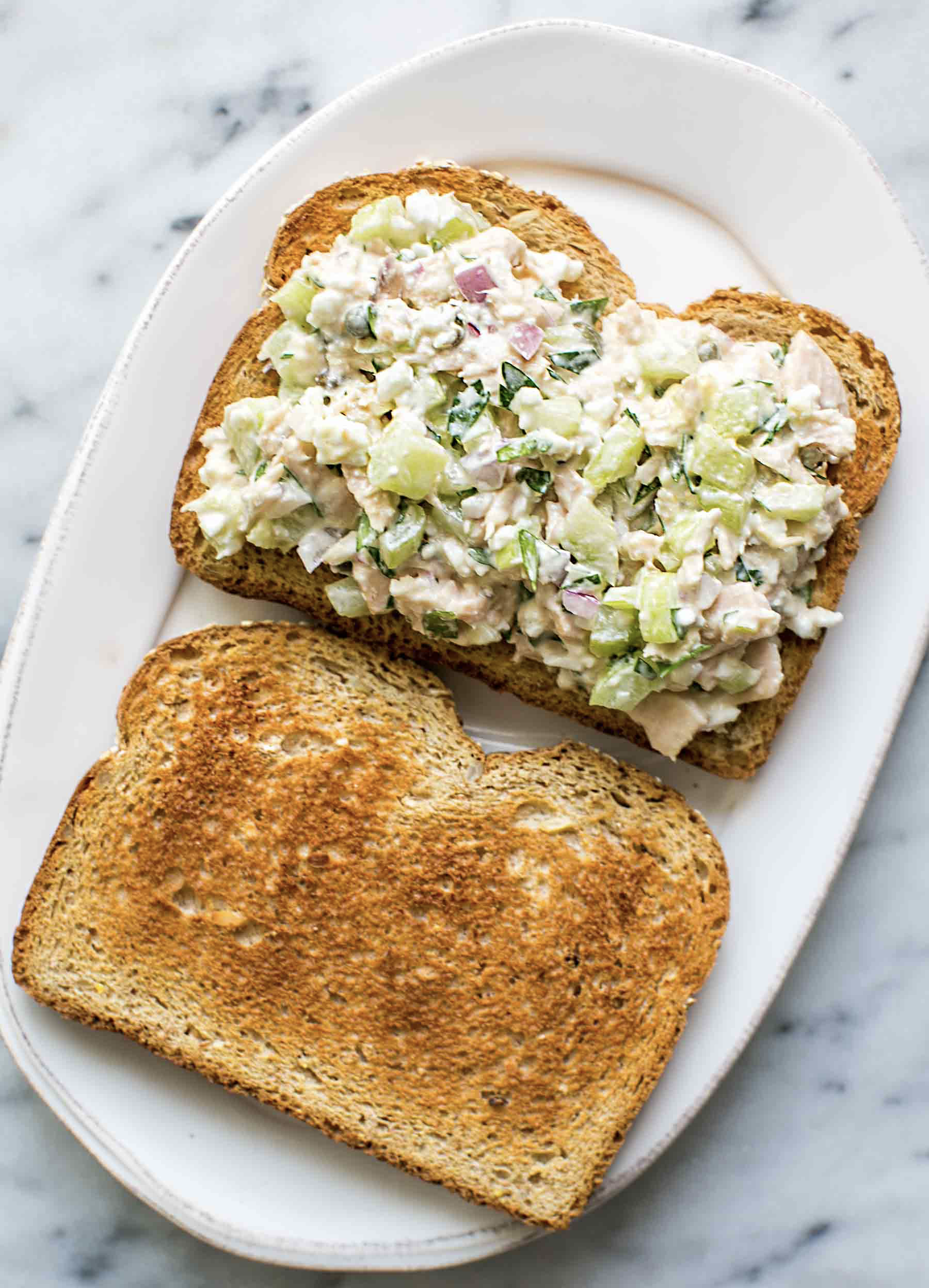
2 (5-ounce) cans water-packed tuna
2-4 tablespoons mayonnaise
1 stalk celery diced small
2 small scallion diced small
1 tablespoon freshly squeezed lemon juice (from 1/2 lemon)
1 tablespoon pickle relish optional
salt to taste
pepper to taste
Directions:
Add Recipe to Cook'n
blog comments powered by Disqus

Since I tend to feel I’m fairly average, my sense is others might have this question as well.
With that in mind, I thought I’d share the answer. My information comes from several articles I read, but I’ll be concise and just share what professional chef, Christine Gallery, had to say. She’s sort of an onion expert.
To start off, she says, “Green onions and scallions are pretty much the same thing. When you want a hit of less-intense onion flavor, they’re your alliums of choice.” For simplicity’s sake, I’ll write on using just the term “scallions.”

They are either harvested very young from the regular bulb-forming onions we are familiar with, or they can come from other varieties that actually never form bulbs.
Scallions are long, with a white stem end that does not bulge out. They have an onion-y but mild bite that is not as intense as regular onions (the white parts contain the most intense flavor). They can be used raw or cooked, and while some cooks discard the darker green tops, the whole thing can be eaten. (Asian cooking commonly includes the darker green tops.)
Scallions are usually available year-round. Look for a bright color, undamaged leaves, and firm stem ends.
Good to know. But how about spring onions —are they the same thing as scallions? Related, but not the same. Spring onions look similar to scallions, but you’ll notice that they have small onion bulbs at their bases.

These onions come from the varietals (another word for ‘variety’ or ‘family’) that produce bulbs and are basically more mature versions of scallions. They are planted as seedlings in the late fall and then harvested the next spring, thus the word “spring” in the name.
Spring onions are sweeter and mellower than regular onions, but the greens are more intense in flavor than scallions. The bulbs can be red or white, depending on the varietal, and while they can be used in much the same way as regular bulb onions, they are great grilled, roasted whole, or used like pearl onions.
Finally, can you substitute one for the other? It boils down to taste preference. While the flavors and textures of scallions and spring onions are similar, just remember that they have a different intensity of flavors. Chef Christine doesn’t recommend using spring onions in place of scallions if the scallions are meant to be left raw (such as in a tossed salad or garnishing a soup). She says the more intense flavor could detract from the result you’re wanting to achieve.

However, she says that if you’re planning on cooking the scallions or spring onions, then substitution will work. Because the cooking will mellow and even out the differences, cooking makes them fairly interchangeable.
Now, how about a recipe that uses scallions? This simply delicious recipe is courtesy of www.thekitchn.com. And read all the way to the end for enticing variations on it.

Perfect Tuna Salad
Ingredients:
2 (5-ounce) cans water-packed tuna
2-4 tablespoons mayonnaise
1 stalk celery diced small
2 small scallion diced small
1 tablespoon freshly squeezed lemon juice (from 1/2 lemon)
1 tablespoon pickle relish optional
salt to taste
pepper to taste
Directions:
Use a can opener to cut open the cans of tuna fish, but leave the lid in place. Holding the cans over the sink or a bowl, press the lid into the tuna fish and tilt the can to drain all the liquid. Remove the lids and transfer the tuna fish to a medium bowl.
Add 2 tablespoons mayonnaise, the celery, shallot, lemon juice, pickle relish (if using), a sprinkle of salt, and a few cracks of fresh black pepper to the tuna fish. Stir with a fork to combine, breaking up any large chunks of tuna fish as you go. Add more mayo if you'd like smoother, creamier tuna salad. Taste and add more of any of the ingredients to taste. Use immediately or store in a covered container in the refrigerator for up to a week.
RECIPE NOTES
Tuna Salad Variations
Use yogurt instead of mayo for a lighter salad.
Use extra-virgin olive oil instead of mayo for a looser salad.
Use canned salmon, smoked trout, or leftover chicken in place of the tuna.
Add diced apples, raisins, or dried fruit to the basic recipe.
Add diced fennel, shredded cabbage, diced cucumbers, or any other crunchy vegetable.
Add a dash of curry powder, dukkah, harissa, chopped fresh herbs, or any other spice mix in your cupboard.
Tuna and mayo — it's as simple as you can get, and a perfectly acceptable lunch.
Add 2 tablespoons mayonnaise, the celery, shallot, lemon juice, pickle relish (if using), a sprinkle of salt, and a few cracks of fresh black pepper to the tuna fish. Stir with a fork to combine, breaking up any large chunks of tuna fish as you go. Add more mayo if you'd like smoother, creamier tuna salad. Taste and add more of any of the ingredients to taste. Use immediately or store in a covered container in the refrigerator for up to a week.
RECIPE NOTES
Tuna Salad Variations
Use yogurt instead of mayo for a lighter salad.
Use extra-virgin olive oil instead of mayo for a looser salad.
Use canned salmon, smoked trout, or leftover chicken in place of the tuna.
Add diced apples, raisins, or dried fruit to the basic recipe.
Add diced fennel, shredded cabbage, diced cucumbers, or any other crunchy vegetable.
Add a dash of curry powder, dukkah, harissa, chopped fresh herbs, or any other spice mix in your cupboard.
Tuna and mayo — it's as simple as you can get, and a perfectly acceptable lunch.
Recipe formatted with the Cook'n Recipe Software from DVO Enterprises.
Sources:
- www.saveur.com
- www.m.youtube.com
- www.kcet.org
- www.foodfidelity.com
- www.simplyrecipes.com
 Alice Osborne
Alice Osborne
Weekly Newsletter Contributor since 2006
Email the author! alice@dvo.com
